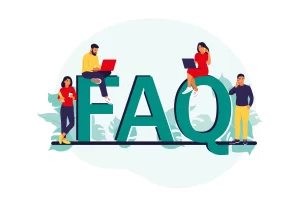Signs of Intimacy in a Relationships: Nonverbal communication plays an essential role in our daily interactions. In a romantic relationship, nonverbal cues can often speak louder than words. The ability to understand and use nonverbal communication can improve intimacy, strengthen connections, and foster a deeper level of understanding between partners.
In this article, we will explore the art of nonverbal communication and how it manifests in relationships. From the subtle cues of body language to the power of touch, we will delve into the signs of intimacy that can strengthen your bond with your partner.
What is Nonverbal Communication?
Nonverbal communication refers to any message that is conveyed without the use of words. This can include facial expressions, body language, gestures, and touch. Nonverbal communication often provides insight into a person’s emotions, thoughts, and intentions.
In romantic relationships, nonverbal communication can play a significant role in building intimacy and understanding between partners. Understanding and utilizing nonverbal cues can improve communication and foster deeper connections.
The Power of Eye Contact
Eye contact is a powerful nonverbal cue that can convey a wide range of emotions and intentions. Maintaining eye contact with your partner can signal interest, trust, and intimacy. It can also convey confidence and assertiveness.
On the other hand, avoiding eye contact can signal discomfort, anxiety, or a lack of interest. In a relationship, consistent eye contact can be a sign of trust and openness, while a lack of eye contact can be a red flag that there are issues to address.
Body Language
Body language refers to the way we use our bodies to communicate. This can include everything from the way we stand or sit to the way we use our hands and arms.
In a romantic relationship, body language can be a powerful tool for conveying intimacy and connection. Simple gestures like reaching out to touch your partner’s arm or leaning in close can communicate feelings of affection and interest.
Other body language cues to look out for include mirroring your partner’s body language, which can signal a strong connection and a shared emotional state. On the other hand, crossing your arms or turning away from your partner can signal defensiveness or a lack of interest.
The Power of Touch

Touch is a powerful nonverbal cue that can communicate intimacy, comfort, and trust. In a romantic relationship, physical touch can be a critical component of building and maintaining a strong connection.
Touch can take many forms, from holding hands to hugging, kissing, or cuddling. These small acts of physical intimacy can convey feelings of love, affection, and support. Physical touch can also release oxytocin, a hormone that promotes bonding and feelings of closeness.
Vocal Cues
Vocal cues refer to the way we use our voices to communicate. This can include tone, pitch, volume, and pace.
In a romantic relationship, vocal cues can provide insight into our emotional states and intentions. Soft, gentle tones can communicate intimacy and affection, while loud, aggressive tones can signal anger or frustration.
The way we speak can also provide insight into our emotional states. For example, speaking quickly and loudly can indicate excitement or enthusiasm, while speaking slowly and softly can signal sadness or disappointment.
 Conclusion
Conclusion
Signs of Intimacy in a Relationships. Nonverbal communication plays an essential role in romantic relationships. The ability to understand and utilize nonverbal cues can strengthen connections, improve intimacy, and foster deeper levels of understanding between partners.
By paying attention to nonverbal cues like eye contact, body language, touch, and vocal cues, partners can improve communication and deepen their emotional connection. By using nonverbal cues intentionally, couples can strengthen their bond and build a stronger foundation for a lasting relationship.

How can I improve my nonverbal communication skills in my relationship?
Improving your nonverbal communication skills can take time and effort. A good starting point is to pay attention to your own body language and the cues you are giving off. Practice maintaining eye contact, using open body language, and being intentional with your physical touch.
What are some common nonverbal cues of intimacy?
Common nonverbal cues of intimacy include maintaining eye contact, using open and relaxed body language, using physical touch, and mirroring your partner’s body language.
Can nonverbal communication be misunderstood in a relationship?
Yes, nonverbal communication can sometimes be misunderstood. It is important to communicate openly with your partner and ask for clarification if there are any misunderstandings or misinterpretations.
Can nonverbal communication be used to build trust in a relationship?
Yes, nonverbal communication can be a powerful tool for building trust in a relationship. Consistent eye contact, open body language, and physical touch can all convey feelings of trust and support.
How can nonverbal communication be used to de-escalate conflict in a relationship?
Nonverbal communication can be used to de-escalate conflict in a relationship by using calming gestures like deep breathing, using a gentle tone of voice, and maintaining eye contact. These cues can help to defuse tension and promote a more productive dialogue.
What are some common nonverbal cues of discomfort or unease in a relationship?
Common nonverbal cues of discomfort or unease in a relationship include avoiding eye contact, crossing arms or legs, fidgeting or restless movements, and standing or sitting at a distance from your partner.
Can nonverbal communication vary between cultures and individuals?
Yes, nonverbal communication can vary between cultures and individuals. It is important to be aware of cultural differences in nonverbal communication to avoid misinterpretation or misunderstandings.
Can nonverbal communication be used to show empathy and support in a relationship?
Yes, nonverbal communication can be used to show empathy and support in a relationship. Active listening, maintaining eye contact, and using physical touch can all convey feelings of support and understanding.
How can nonverbal communication be used to show appreciation and gratitude in a relationship?
Nonverbal communication can be used to show appreciation and gratitude in a relationship by using physical touch, maintaining eye contact, and using positive vocal cues like a gentle tone of voice or words of affirmation.
What are some ways to practice and improve nonverbal communication skills in a relationship?
Ways to practice and improve nonverbal communication skills in a relationship include paying attention to your own body language, practicing active listening, using positive vocal cues, and being intentional with physical touch. Practicing and utilizing these skills consistently can help to strengthen your connection and improve communication with your partner.








